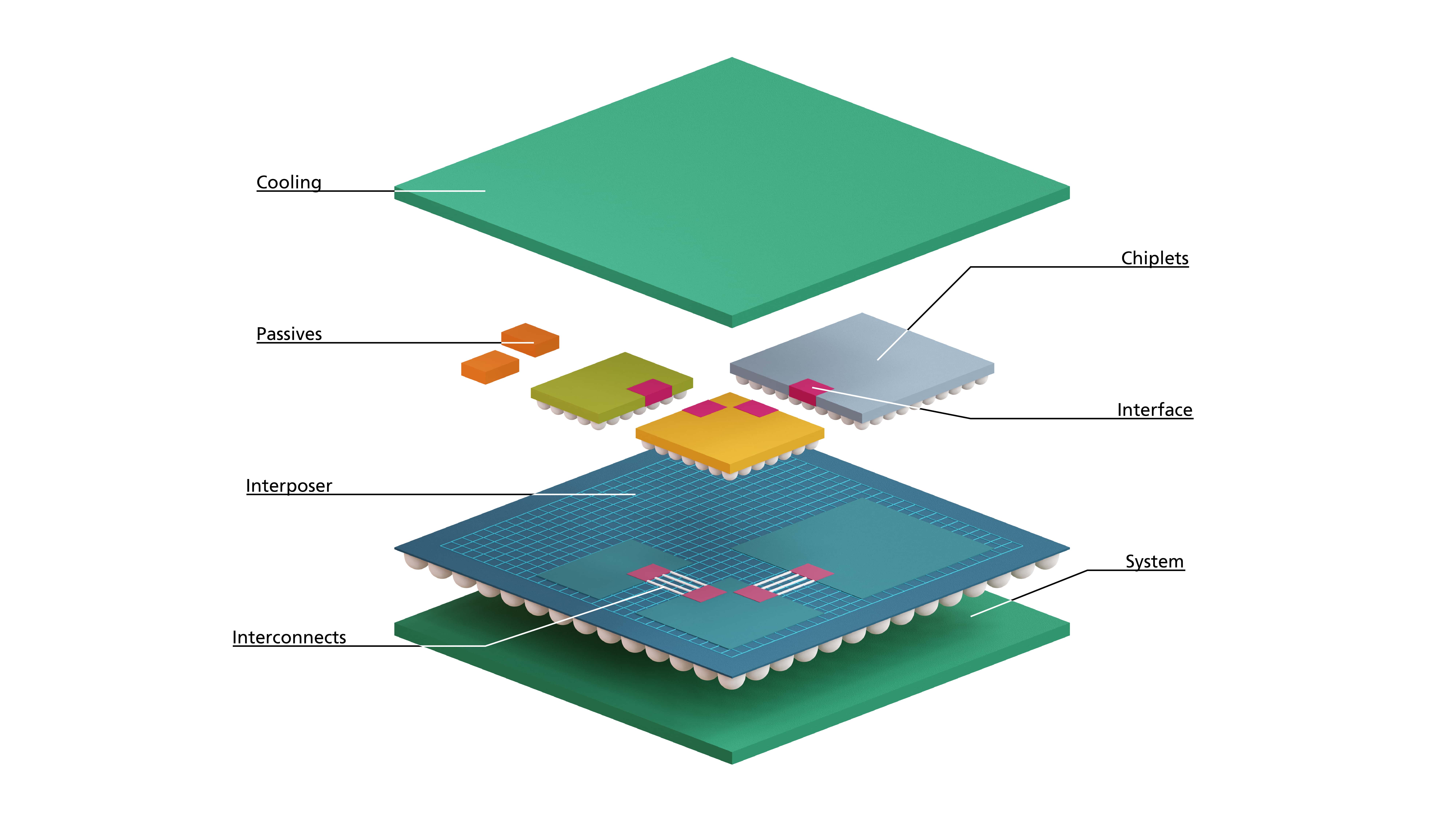Chiplets are small components that form high-performance systems and increase the efficiency of semiconductor production. Developing chiplets calls for standards and advanced design tools. Fraunhofer IIS works closely with industry partners to optimize chiplet-based systems. This modular technology offers flexibility and contributes to technological independence. Chiplets are employed in metrology and other sectors to construct powerful, highly efficient systems. Smaller companies can cater to niche markets. Chiplet technology will transform the global semiconductor industry, foster competition and cooperation, and spur new innovations. Andy Heinig, Head of Department for Efficient Electronics at Fraunhofer IIS in Dresden, explains the importance of chiplets.
Innovation in the semiconductor market: chiplets pave the way to the future
March 4, 2024 | An expert interview with Andy Heinig, Fraunhofer IIS, Engineering of Adaptive Systems EAS

Could you tell us about collaboration between Fraunhofer IIS and industry partners on chiplet technology?
Andy Heinig: We want to establish a Chiplet Center of Excellence (CCoE) here in Dresden, where Fraunhofer IIS researchers and their industry counterparts will work together on this topic. At the moment, we’re focusing on the automotive industry; we plan to undertake chiplet research in conjunction with various automotive suppliers. In this context, we’ll be addressing questions such as what future systems might look like in areas such as autonomous driving and advanced assistance systems. On top of these specific examples, however, I should also mention ongoing research projects with individual SMEs and larger industry partners, which are focused more on developing components and basic building blocks. Meanwhile, a further collaboration currently underway with Samsung is about implementing the second generation of a test chip as part of a chiplet interface IP project.
Looking at the global market, what role will chiplet technology play in the future, particularly in relation to international competitiveness and collaborations?
Andy Heinig: Chiplet technology will play a key role in the global semiconductor industry. It fosters both competition and collaboration, as it offers a platform for innovative developments and cooperation. The technology’s modular design allows even smaller electronic systems providers to compete on the global market. At the same time, it opens up opportunities for international collaborations to set shared standards and make further progress in the area of interoperability. I see a future in which chiplet technology forms the basis for a connected, innovative semiconductor sector that operates across national and company borders.
That sounds like a significant innovation. What challenges do you envision in developing and integrating this technology?
Andy Heinig: One of the biggest stumbling blocks is the creation of standards for how chiplets from different manufacturers should interact. Furthermore, the seamless integration of chiplets into an overall system requires advanced design and testing processes.
With regard to the future of the semiconductor industry and the growing importance of technological independence, how do you foresee the role of chiplets in this context?
Andy Heinig: Chiplets will occupy an important place in the development of the semiconductor industry in the future. As well as offering the opportunity to respond swiftly to market needs and technological changes, there’s a major role for them in increasing technological independence by reducing dependence on individual large manufacturers.
What progress and innovations do you expect in the field of chiplet technology in the years ahead?
Andy Heinig: I expect the standards currently being developed will lead to an improvement in interoperability. Moreover, I think we’ll see chiplets increasingly being integrated into a wide variety of application fields, from the automotive sector to metrology.
This article was produced with the support of Nuremberg Institute of Technology students as part of a seminar project by Robert Moors and Rabia Yorulmaz.
Background: chiplets
Chiplets are tiny integrated circuits that can be put together like modular components. With their ability to accommodate many different functions, they are seen as the future of chip design.
Chip packaging solutions (“chip stacking”) make it possible to incorporate various functional units, even of different technologies, on a single substrate or in a 3D design, leaving electronics developers free to employ the most suitable manufacturing technologies for each unit.
In other words, developers can pack functionalities that require the latest semiconductor technologies onto just a few integrated circuits, rather than having to use those technologies to produce the entire chip.
